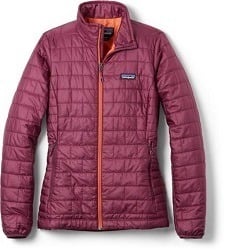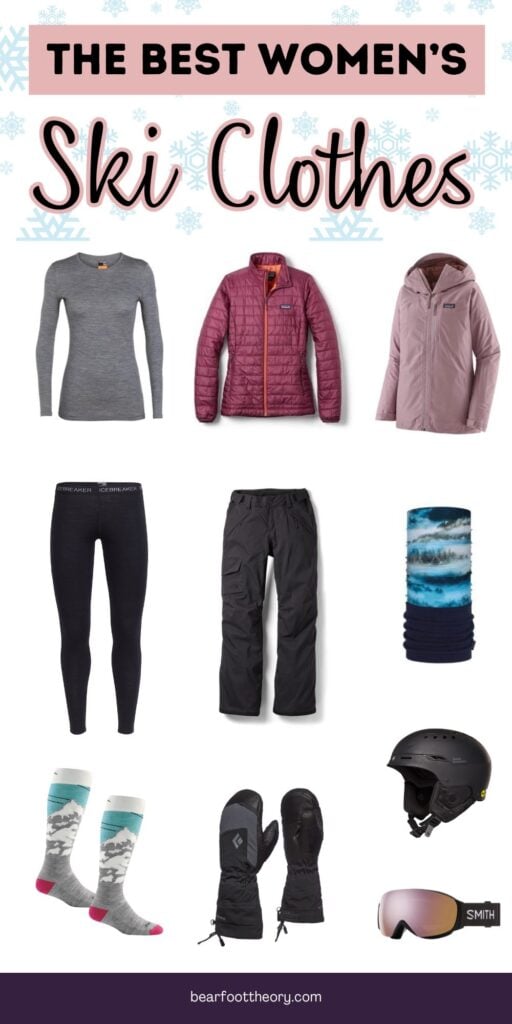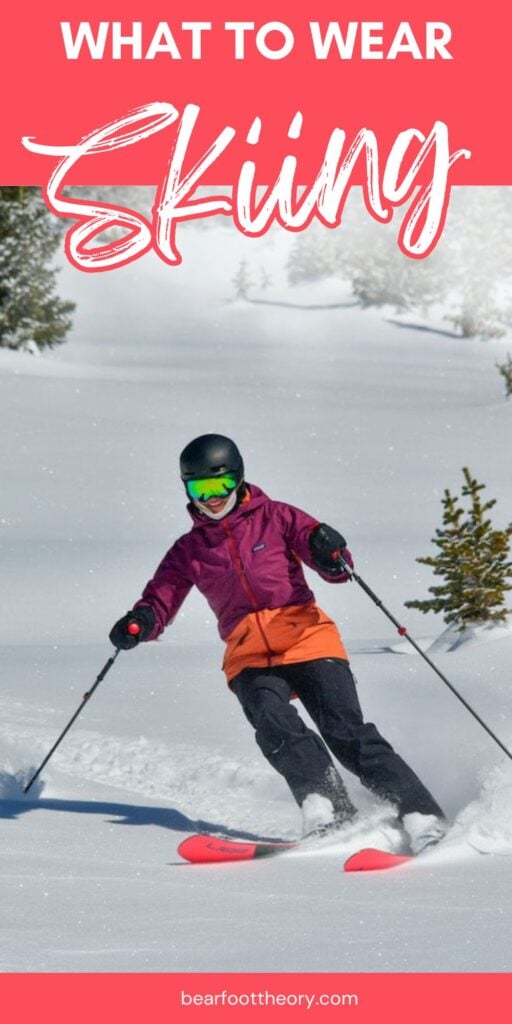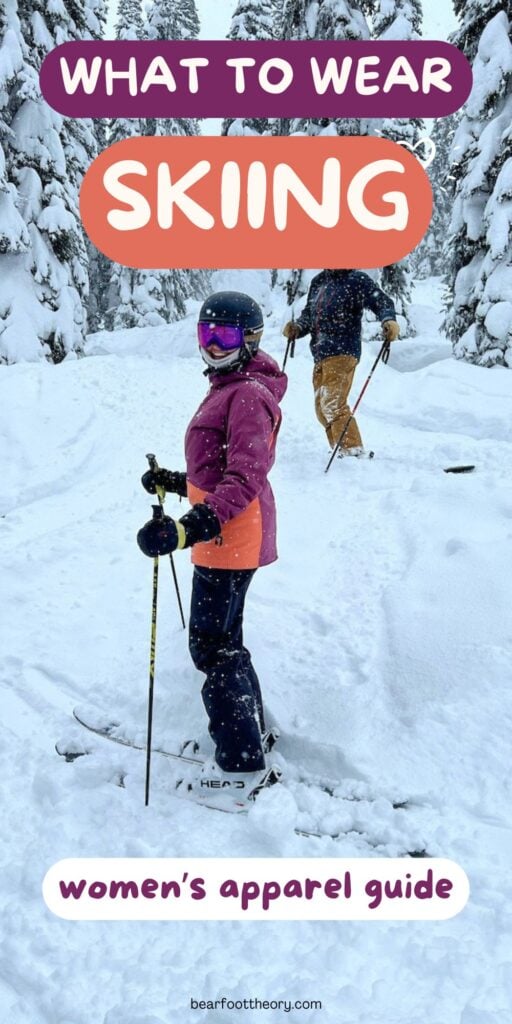What to Wear Skiing: Women’s Ski Apparel Guide
This is the exact layering system I use and the clothes I wear to say warm, dry, and comfortable while skiing.

Layering properly for skiing is a bit of an art, and if done wrong, it can really affect your enjoyment of the sport. Being overdressed or underdressed while skiing can be majorly uncomfortable, as I’ve learned over the years.
The key is finding skiing apparel that will be warm, weatherproof, and windproof, but won’t get sweaty or stinky. You also want a full range of movement so you aren’t hindered by your ski clothing.
If you are a beginner skier, in this post you’ll learn the basics of what to wear skiing (or snowboarding), along with the list of ski layers that I wear. Keep in mind that I’m always adjusting these layers based on temperature, wind factor, and cloud cover.
There’s no doubt that getting into skiing takes some investment. Quality women’s ski apparel is pricey, but once you buy the right gear, it will last you for years.
This post may contain affiliate links.
Ski Jacket
A durable, windproof, and waterproof ski jacket is key to staying warm and dry while skiing. Here are some factors to look for in a ski jacket:
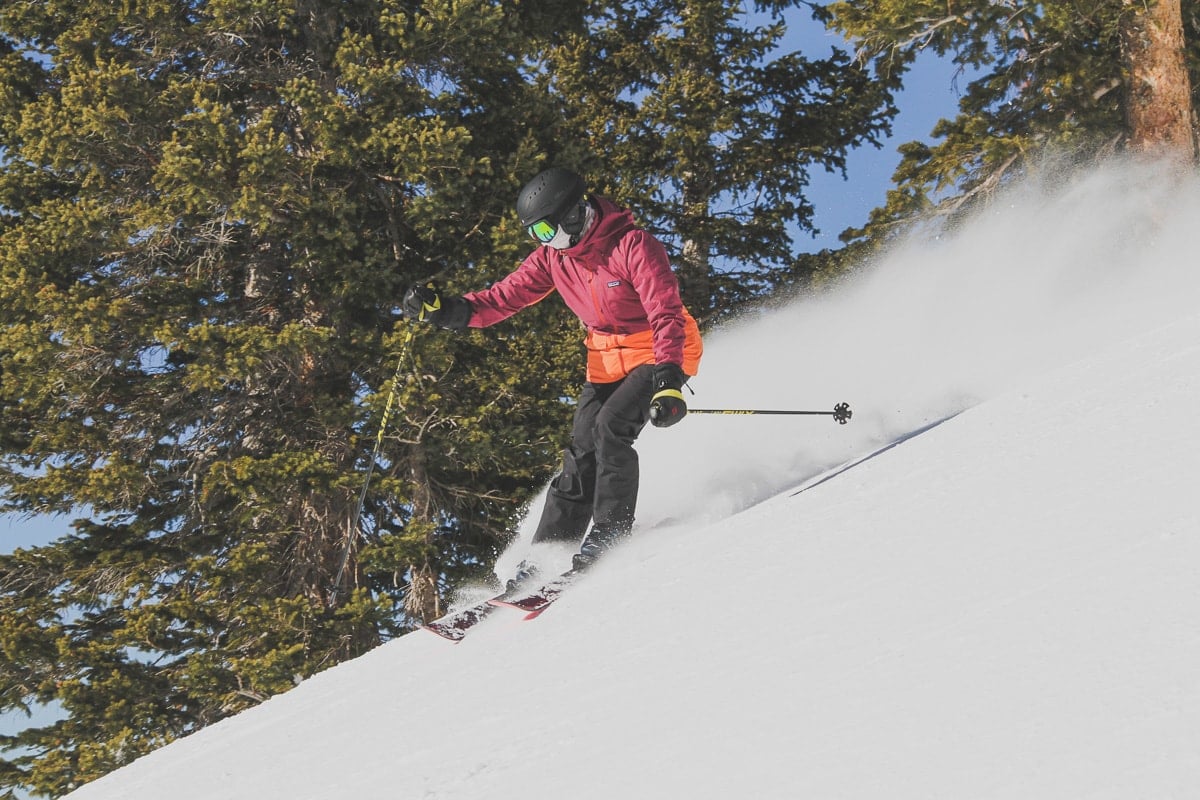
Recommended Ski Jacket

Patagonia Insulated Powder Town
The Patagonia Insulated Powder Town Jacket is the my favorite ski jacket I’ve owned. The outer layer is durable and waterproof while the lightweight inner insulation keeps you warm and dry and wicks away sweat. It’s not too bulky or thick, so I can layer underneath without feeling restricted, and the pit zips allow for quick ventilation on warmer afternoons. The hood is helmet-compatible, which is convenient for those extra windy days.
Save this post!
Enter your email & I'll send this post to your inbox! You'll also receive my weekly newsletter full of helpful advice for planning your adventures.
Ski Pants
Like your ski jacket, you want your ski pants to be reliably waterproof, especially if you’re a beginner skier when you might be spending more time sitting in the snow. Here are some considerations for ski pants:
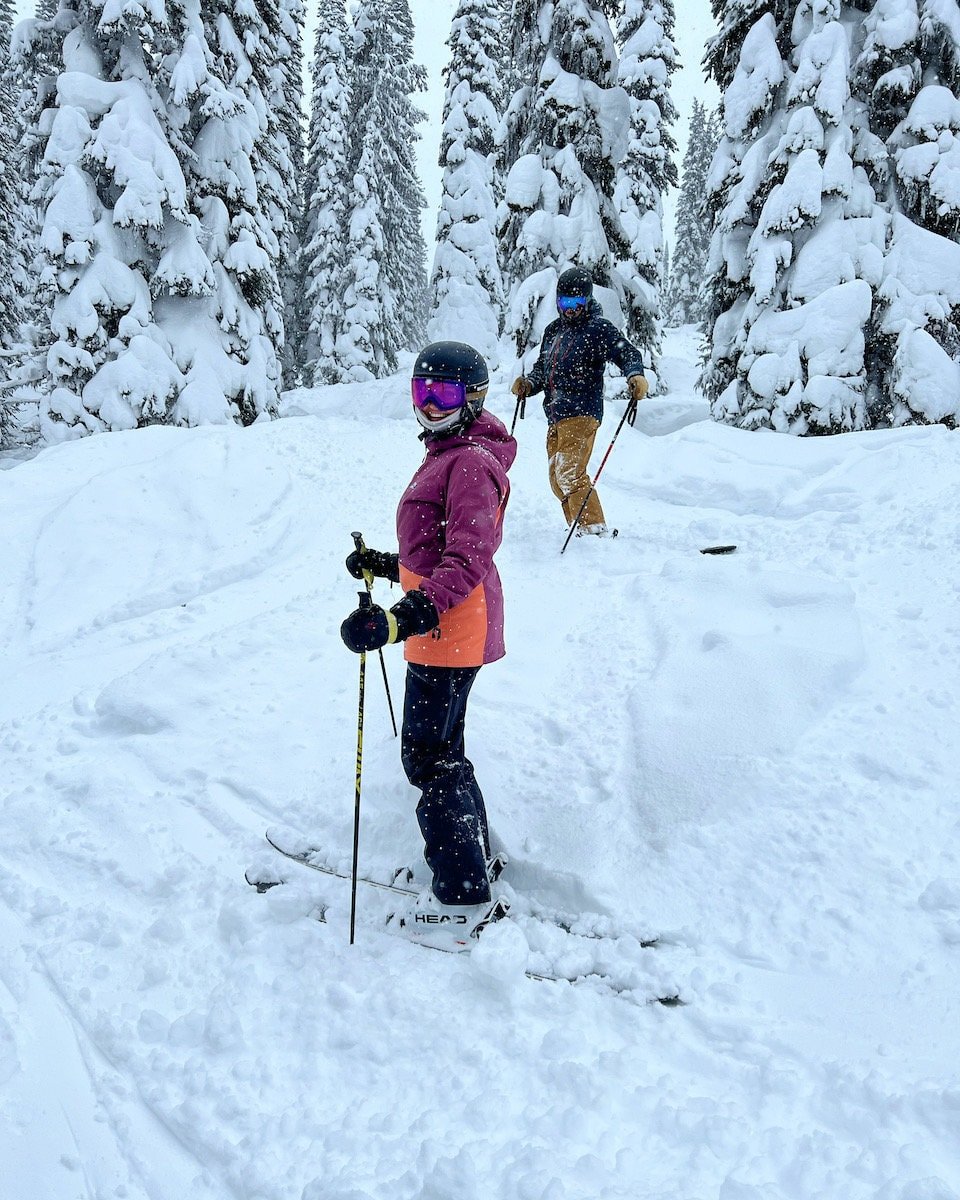
Recommended Ski Pants
Arc’teryx Sentinel Pants
When I ski, I wear the Arcteryx Sentinel AR Pants. They are pricey (I scored mine on sale at the end of the season), but these should last me no less than a decade. They are hardshell, Gortex-lined pants with fully seamed waterproof zippers. They are super windproof, but they aren’t insulated meaning you’ll want a solid base layer (or 2) underneath. During spring, they have a side zipper so you can vent them if you’re hot, making them versatile for other winter activities too.
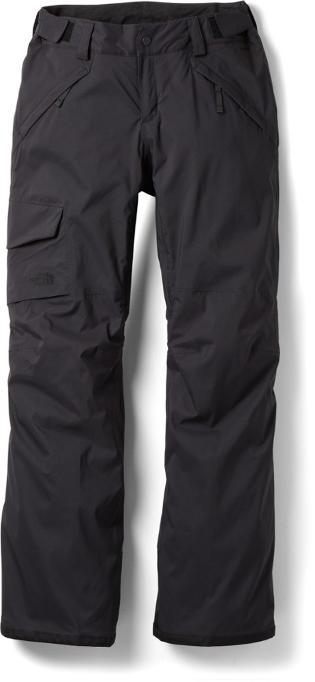
North Face Freedom Insulated Snow Pants
If you want something more budget-friendly, I recommend the North Face Freedom Insulated Snow Pants. These are the ski pants I used when I first started skiing. They are basic insulated ski pants that will keep you warm and dry in moderate weather conditions.
Skiing Base Layer
The first thing you want to put on is long johns. This next-to-skin base layer is intended to regulate your body temp and wick away sweat while you’re skiing. Base layers come in different weights from lightweight to heavyweight and are intended to be combined depending on conditions.
Base layers are made from a variety of materials, and the key is to avoid cotton since it tends to hold onto moisture and doesn’t dry quickly. I recommend merino wool or synthetic materials, like polyester.
If it’s really cold, I may wear two base layers under my mid-layer which I’ll talk about below.

Recommended Base Layers

Icebreaker Oasis 200 Crew top
I wear a wool baselayer that wicks sweat. My go-to is the Icebreaker Oasis 200 Crew top. I’ve worn it more than 100 days, and it’s a lot more durable that other wool baselayers I’ve tried from other brands. It’s also super soft and doesn’t leave you feeling itchy like wool can sometimes do. Just be careful not to dry it, or it will shrink.

Icebreaker Oasis 200 leggings
I also wear Icebreaker long johns on my legs. The Icebreaker Oasis 200 leggings keep me warm (but not too hot), and they don’t stretch out, even after many days of wear. If it’s really cold, since my ski pants aren’t insulated, I sometimes double up on these.
Mid Layer Jacket
On top of my base layer and underneath my ski jacket, I wear a mid-layer jacket. Again you’ll want to avoid cotton, and I’d also avoid down. Down doesn’t dry quickly, and it’s also less breathable than synthetic materials. Breathability is really important for your mid-layer because there is no way to vent it underneath your ski jacket.
Typically mid-layer can be a fleece, a synthetic jacket, or a thicker wool layer. I also prefer a mid-layer without a hood in order to reduce bulk under my ski jacket.
During warmer spring skiing, you may not need to wear a mid-layer.
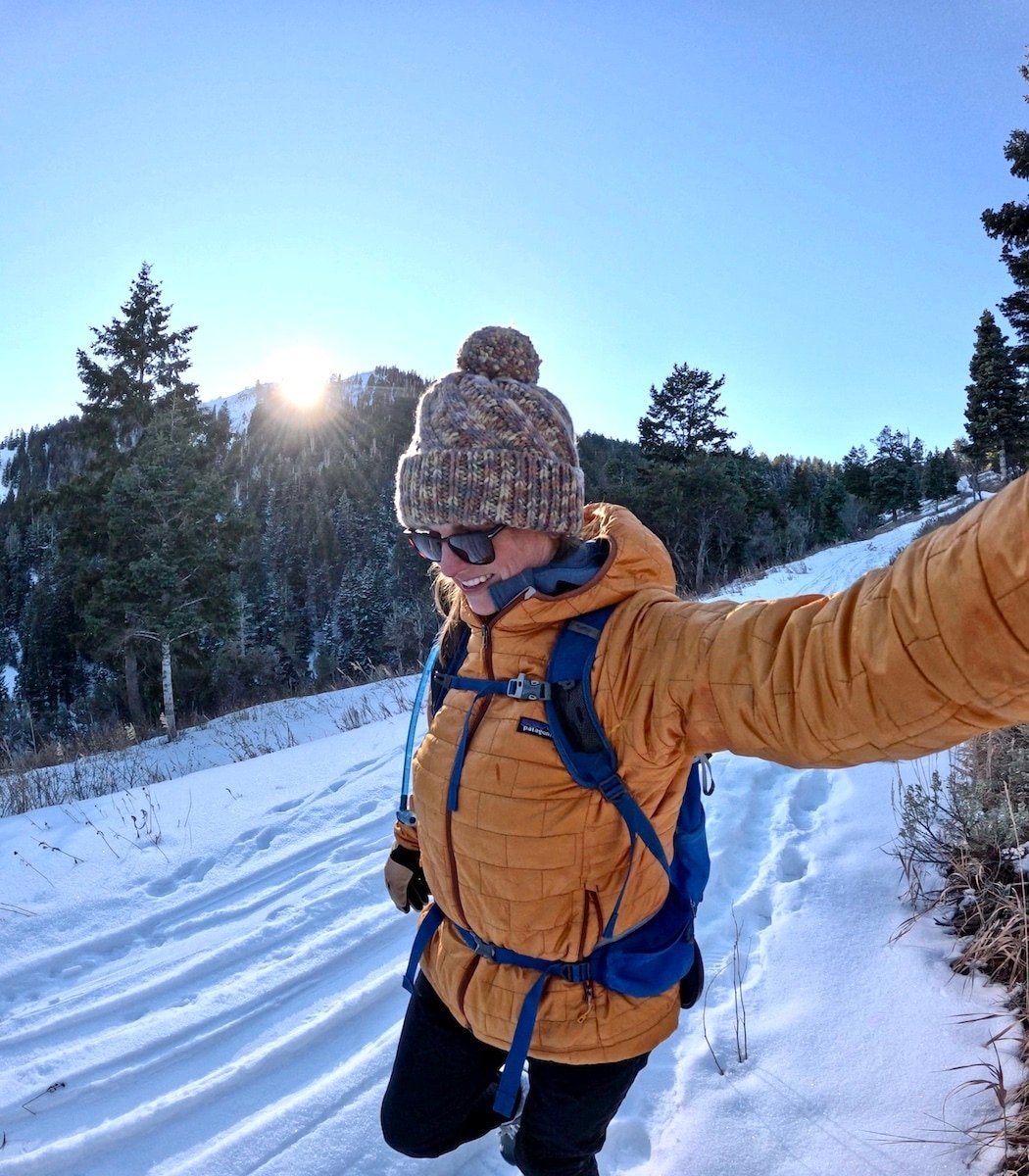
Recommended Mid-Layer
Patagonia Nano Puff Jacket
When I’m skiing, I wear the Patagonia Nano Puff as my mid-layer. It’s very thin and light, so it doesn’t feel bulky or uncomfortable layered under a ski jacket. At the same time, it’s warm, breathes well, and provides extra wind protection. See my full Patagonia Nano Puff review for more thoughts on this jacket.
Ski Socks
Despite popular belief, thinner socks are better than thick socks when it comes to skiing. Thinner socks allow for a better fitting boot which will give you more control over your skis. Further heavy ski socks can result in sweaty feet, which actually make your feet colder than if you were wearing a thinner ski sock.
If your feet tend to get really cold like mine, I highly recommend you invest in some boot heaters. And for what it’s worth, I much prefer boot heaters to heated socks. Heated socks are thick, and you can feel the wires running through the sole of the sock, which I found very distracting and uncomfortable.
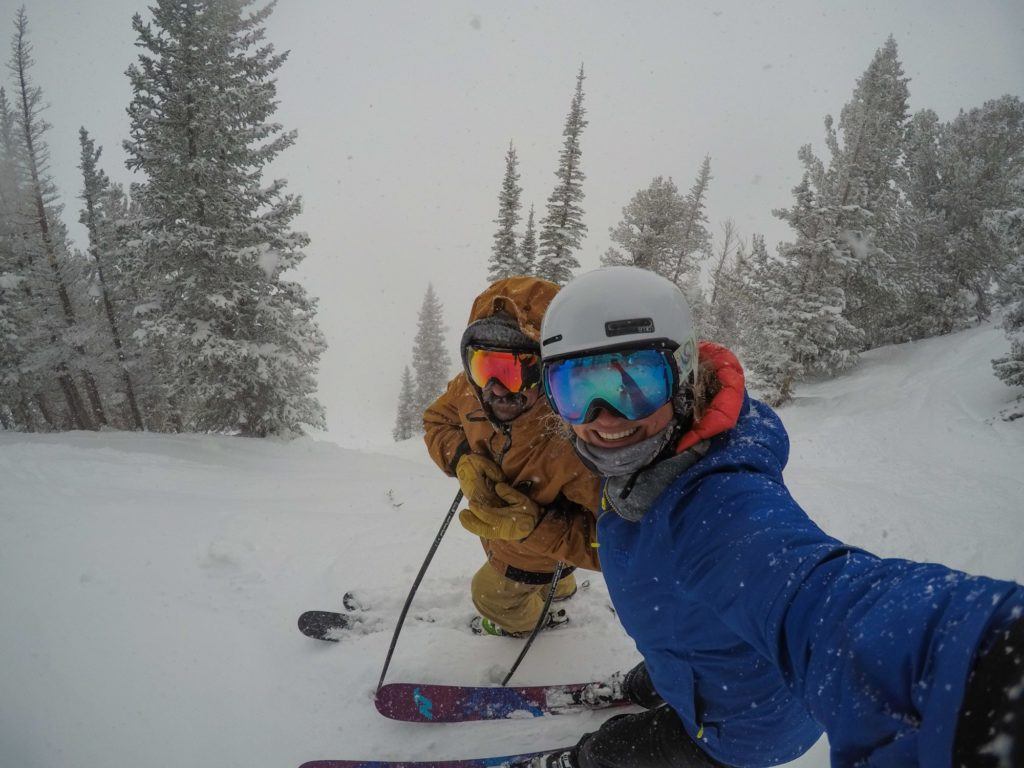
Recommended Socks
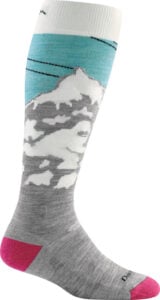
Darn Tough Lightweight Ski Socks
I personally like Darn Tough’s ski and snowboard socks. I wear the lightweight ones, which have padding in all of the right places, like in front of the shin and the heel. They also stay glued in place throughout the day, and I never experience any shifting around in my boot.
Skiing Accessories
In addition to all of the layers, you always want to wear a helmet, goggles, gloves, and a neck warmer when you are skiing. Below is a checklist of the accessories you need.
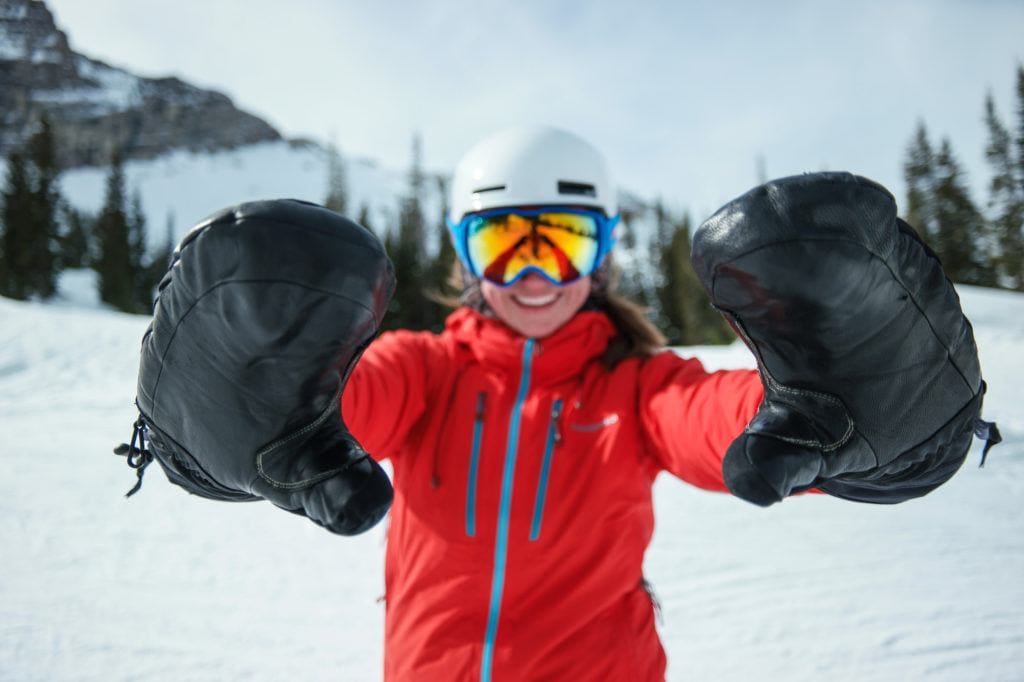
More Winter Tips
Save this post to Pinterest
Got any questions or your own tips about what to wear skiing? Leave a comment below!


